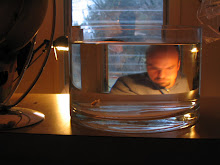
One of the larger questions in the field of aesthetics involves the notion of authenticity. Which composer's interpretation of Bach's St. John Passion most closely approximates the composer's intentions? Is a performance played on period instruments in 2009 somehow more authentic than one played on modern instruments in 2008? Can a performance of Vivaldi's Four Seasons in an air conditioned concert hall ever be considered authentic? Tough questions, and they soon give rise to wonderfully intricate, nuanced arguments. Here, for instance, is a portion of Stephen Davies' influential take on the issue:
"A performance will be more rather than less authentic if it successfully (re)creates the sound of a performance of the work in question as could be given by good musicians playing good instruments under good conditions (of rehearsal time etc.) where 'good' is relativized to the best that was known by the composer to be available at the time..."
And, well, you get the picture. But what, wonders the new dad, is the authentic Cleo? Is it the bodhisattva who crosses her little legs into a neat fold? Is it the recumbent diner, happy at her mother's breast? The prodigious producer of yellow poop? The girl behind the fleeting, lambent smiles that flicker across her face at random moments?
It's all of these, we say without hesitation - and more. Chew on that, aestheticians.




No comments:
Post a Comment